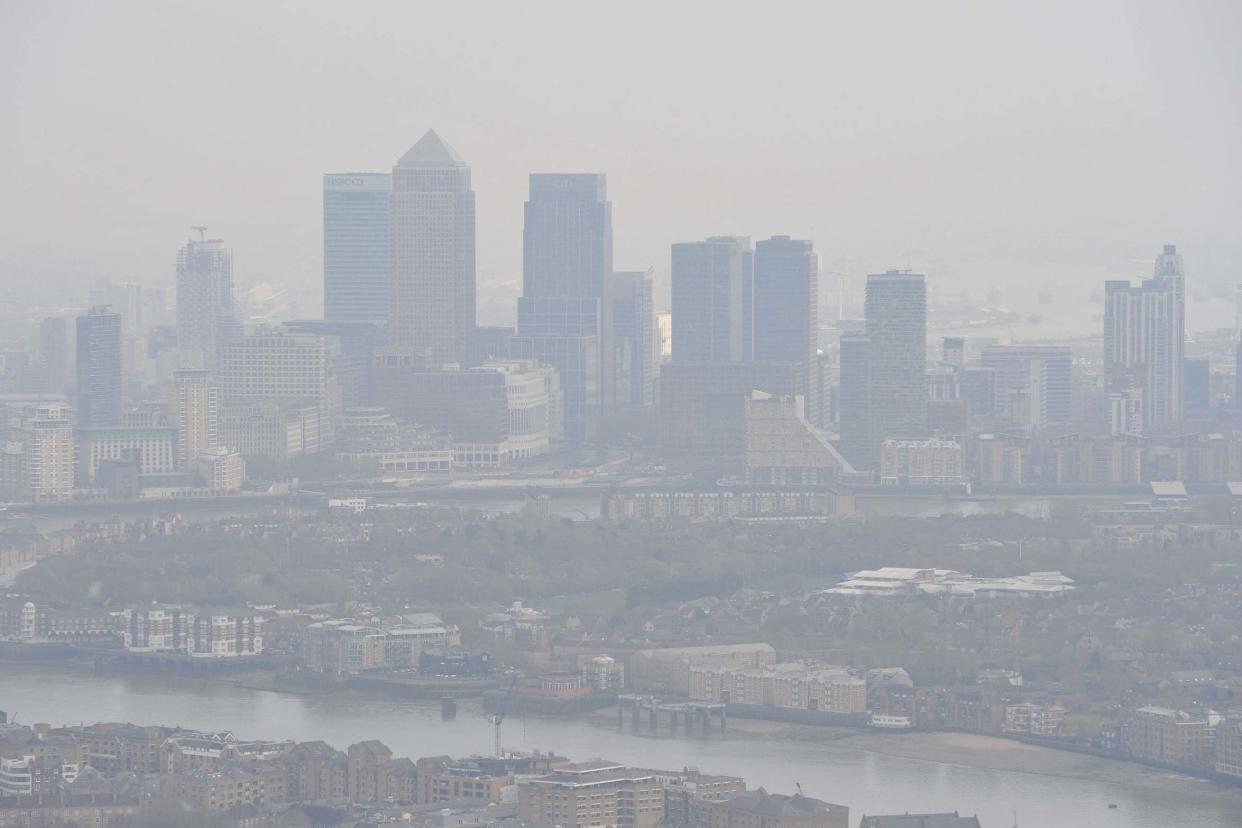Risk of dying from long-term exposure to London’s toxic air has risen for third year running, new figures show

The risk of dying early due to toxic particulate air pollution has risen again in London, new figures show.
Public Health England data reveals that in 2018, 6.6 per cent of all deaths in the London region were attributable to PM 2.5 - up from 6.5 per cent in 2017. It was the third year-on-year rise.
The data, based on computer-modelled estimates, also shows that the capital is home to the 15 places in the UK where you are most likely to die from the man-made killer particulates - which scientists have warned can get deep into the lungs and seep into the bloodstream, cause heart and lung disease, cancer, and aggravate asthma.
No London borough saw a drop in the rate of deaths between 2017 and 2018.
Newham rated worst in the entire country, with 7.3 per cent of all recorded deaths linked to PM2.5, up from 7.0 per cent in 2017.
The City and Waltham Forest tied as second worst in the country on 7.1 per cent, with Barking and Dagenham, Kensington and Chelsea, Westminster, Islington, Hackney and Tower Hamlets all on 7.0 per cent.
Bromley, where 5.9 per cent of deaths are caused by PM2.5, had the lowest level, but was still the 40th worst place in the country for dying early due to the particulates.
The impact of air pollutants currently equates to around 28,000 to 36,000 deaths UK-wide each year, according to PHE, with around 3,800 annually in London, according to research unit Centre for Cities’ latest report released last month.
Professor Paul Plant, London regional director for Public Health England, said: “Air pollution is a public health priority for London and our data provides a tool for local authorities and other organisations to inform the action they are taking... Improving air quality is crucial to reducing the health impacts of air pollution across the boroughs and will help people live longer, healthier lives.”
The figures comes despite efforts to reduce pollution levels across London. PM2.5 particulates are blamed on a range of factors from diesel engines to coal-burning power stations, agriculture and shipping.
The World Health Organisation (WHO) says that any reading of PM2.5 above 10 exceeds its guidelines. Newham has an average annual PM2.5 reading of 13, according to 2018 DEFRA figures.
A Newham council spokeswoman said: “Since the new Mayor was elected in May 2018, this administration has vigorously tackled what we deem to be a public health emergency.”
London has signed up to the C40 cities pledge to reach a PM2.5 level of 10 by 2030.
Levels of Nitrogen Dioxide (NO2) have fallen in London in recent years, but reached an estimated 51,000 tonnes of emissions according to the Centre for Cities report.
A spokesperson for the Mayor of London said: “Air pollution is a national health crisis that is contributing to thousands of premature deaths in London alone. In London Sadiq is taking some of the boldest action of any city in the world to ensure Londoners can breathe clean air. This includes implementing the world’s first Ultra Low Emission Zone, which has already reduced harmful nitrogen dioxide pollution by almost a third in central London. However, he doesn’t have the powers to tackle all the sources of PM2.5 pollution – from construction to wood-burning to the river. This is why Government must help clean up filthy air across the country. This must include using the new Environment Bill to give cities the powers they need and making World Health Organization air quality guidelines legally-binding targets to be met by 2030."

 Yahoo News
Yahoo News 
